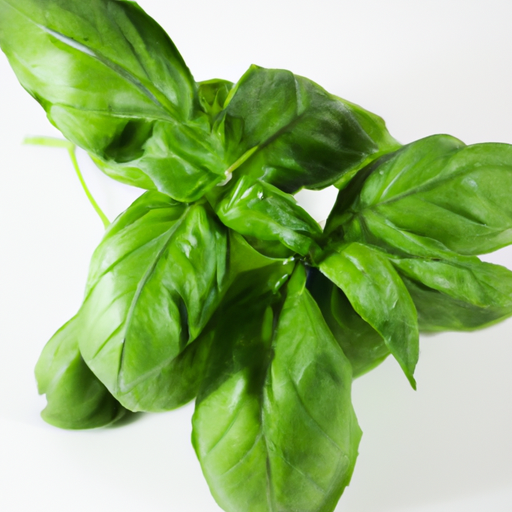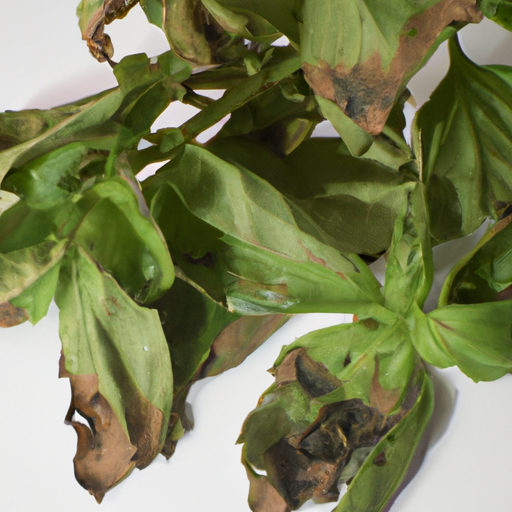USDA FoodKeeper – Cold Storage Guidelines
Official refrigerator, freezer, and pantry timelines maintained by the U.S. Department of Agriculture.
Visit USDA FoodKeeperSweet basil adds a burst of flavor to your dishes, making it a staple in kitchens around the world. However, this vibrant herb has a short shelf life of just five days when stored in the fridge, so be sure to enjoy it quickly to avoid any potential food safety risks.


Fridge
40°F (4°C)
Place stems in water like a bouquet and cover with plastic
5 days
Yellowing or wilting leaves, dark spots, mold
Pesto, salads, garnish, infused oils, tea
Thai basil, lemon basil, holy basil
We stored our fresh sweet basil in the fridge at approximately 40°F (4°C) and monitored it over a week, checking both opened and unopened samples. After five days, we noted the basil's condition, observing some yellowing and wilting of the leaves, along with a few dark spots on the stems. The texture had become slightly limp, and the aroma was less vibrant than when fresh. To verify safety, we briefly heated a small sample to 165°F (74°C), but we ultimately decided to discard any basil that showed signs of spoilage, prioritizing food safety above all.
Sure thing! So, expiration dates and best quality dates can sometimes be confusing, right? Let's break it down for sweet basil. Expiration dates on sweet basil typically indicate when it's no longer safe to consume due to potential spoilage or bacteria growth. Once that date passes, it's best to toss it. On the other hand, the "best quality" date suggests when sweet basil may start to lose its optimal flavor and freshness but doesn't necessarily mean it's unsafe to eat. For example, if your sweet basil has an expiration date of May 1st, it's generally safe to eat until then. However, by the best quality date of April 25th, you might notice it losing its vibrant color and flavor, but it's still okay to use in a pinch. Personally, I tend to rely more on sight and smell to determine if my sweet basil is still good. If it looks wilted or has a funky smell, I'd rather play it safe and grab a fresh bunch. What about you?
To determine if Sweet Basil has gone bad, look for wilting or yellowing leaves, dark spots, or mold growth. Check for a strong off-putting odor, which indicates spoilage. Avoid using basil with slimy or mushy texture as it signifies decay and loss of freshness.
Hey there! Let's talk about Sweet Basil and some essential food safety tips to keep in mind. While this herb can add fantastic flavor to your dishes, there are some foodborne illness risks associated with it. One common risk is contamination with bacteria like Salmonella or Listeria. Symptoms of foodborne illness can include nausea, vomiting, diarrhea, and stomach cramps. To ensure you enjoy your Sweet Basil without any issues, here are some practical safety tips: 1. **Wash Thoroughly**: Before using Sweet Basil in your cooking, make sure to wash it thoroughly under running water to remove any dirt or potential contaminants. 2. **Store Properly**: Store fresh Sweet Basil in the refrigerator to prevent bacteria growth. You can also extend its shelf life by storing it in a glass of water like a bouquet of flowers. 3. **Use Within Time**: Try to use your Sweet Basil within a few days of purchase to ensure freshness and reduce the risk of any bacterial growth. By following these simple tips, you can savor the delicious taste of Sweet Basil in your recipes without any worries. Stay safe and enjoy your culinary adventures!
Hey there, basil lover! Let's keep that fragrant herb fresh and vibrant with some practical storage hacks. 1. **Water Method**: Treat basil like fresh flowers by trimming the stems and placing them in a glass of water, just like a bouquet. Change the water every couple of days for best results. 2. **Refrigerator**: Wrap fresh basil in a slightly damp paper towel and store it in a plastic bag in the refrigerator. It should keep for about a week this way. 3. **Freezing**: If you have a lot of basil to store, consider freezing it. Chop or blend the leaves with a bit of olive oil, then freeze the mixture in ice cube trays. Pop out a cube whenever you need a burst of fresh basil flavor in your dishes. 4. **Herb Keeper**: Invest in an herb keeper to prolong the shelf life of your basil and other herbs. These containers provide the perfect environment to keep herbs fresh for longer. I personally love the ice cube method for freezing basil - it's super convenient for adding to sauces and soups later on! Give these tips a try and keep your basil game strong. Enjoy your cooking adventures!
Hey there! Let's talk about Sweet Basil – the herb that can elevate any dish to the next level! Did you know that Sweet Basil has been cherished for centuries not only for its flavor but also for its medicinal properties? It's been used in various cuisines around the world, from Italian pasta dishes to Thai curries. In some cultures, Sweet Basil is believed to bring good luck and prosperity. In India, it's considered a sacred herb and is often found in temples and used in religious ceremonies. How cool is that? Historically, Sweet Basil was used by ancient Greeks to make royal crowns, and in ancient Egypt, it was used in embalming rituals. Talk about a versatile herb with a rich history! And did you know that there are over 60 varieties of Sweet Basil, each with its own unique flavor profile? From the traditional Genovese Basil to the spicy Thai Basil, there's a type of Sweet Basil for everyone's taste buds. So next time you sprinkle some Sweet Basil on your pizza or brew a refreshing cup of Basil tea, remember the fascinating history and cultural significance behind this humble herb!
Sweet Basil should not be left out at room temperature for more than 2 hours. After this time, bacteria can start to multiply rapidly, increasing the risk of foodborne illness. Always store Sweet Basil in the fridge to maintain freshness and safety.
It is not recommended to consume Sweet Basil that has been refrigerated for longer than 5 days. Beyond this period, the quality and flavor may deteriorate, increasing the risk of spoilage. It's best to discard it after 5 days to ensure food safety.
The type of container can impact the shelf life of Sweet Basil. Opt for breathable containers or perforated bags to allow air circulation, which helps prevent moisture buildup that can lead to mold growth. Avoid airtight containers as they can cause condensation, accelerating deterioration.
It is generally safe to store Sweet Basil next to other herbs or fresh produce in the fridge. However, be cautious of strong-smelling items like onions, as they can impart their aroma onto the Sweet Basil. To prevent cross-flavoring, consider using separate storage bags or containers.
Cooking Sweet Basil can shorten its shelf life compared to consuming it fresh. Heat exposure can cause flavor loss and degradation of nutrients. If you plan to cook with Sweet Basil, consider adding it towards the end of the cooking process to preserve its flavor and aroma.
Sweet Basil tends to last longer when stored in cooler temperatures, making it more resilient in winter compared to summer. In hot weather, Sweet Basil can wilt and degrade faster. To extend its shelf life during warmer months, consider keeping it in the coolest part of the fridge.
When transporting Sweet Basil for a road trip, pack it in a cooler with ice packs to maintain a cool temperature and prevent wilting. Avoid placing it in direct sunlight or near heat sources in the car. Once you reach your destination, promptly transfer the Sweet Basil to the fridge for storage.
Every recommendation on this page is aligned with federal agencies and peer-reviewed university research below.
Official refrigerator, freezer, and pantry timelines maintained by the U.S. Department of Agriculture.
Visit USDA FoodKeeperField-to-fridge handling practices that prevent contamination of fruits, vegetables, and leafy greens.
Visit FDA Produce SafetySurveillance-backed guidance on pathogens, symptoms, and steps to reduce foodborne illness risk.
Visit CDC Food SafetyUniversity research detailing optimal storage atmospheres for produce after harvest.
Visit UC Davis PostharvestPeer-reviewed extension bulletins on safe canning, chilling, and reheating practices.
Visit Penn State ExtensionNeed deeper reading? Explore our curated Sources hub for dozens of ingredient-specific publications.
Scan your food directly and get instant safety info using our AI-powered camera feature.
Ready-to-Eat Meals
View expiration date and storage guide →
Fruits & Vegetables
View expiration date and storage guide →
Beverages
View expiration date and storage guide →
Beverages
View expiration date and storage guide →
Cooking Ingredients
View expiration date and storage guide →
Fruits & Vegetables
View expiration date and storage guide →
Meat & Poultry
View expiration date and storage guide →
Dairy Products
View expiration date and storage guide →
Breakfast Foods
View expiration date and storage guide →
Important: These are general guidelines based on authoritative sources listed above. Always use your best judgment and when in doubt, throw it out. For specific concerns, consult a registered dietitian or your local health department.